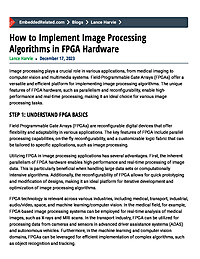
How to Implement Image Processing Algorithms in FPGA Hardware
Recognized for their parallelism and reconfigurability, FPGAs prove ideal for real-time processing in medical imaging and computer vision. The step-by-step approach starts with understanding FPGA basics, emphasizing their reconfigurable nature and parallel processing. It guides users in algorithm selection based on factors like processing speed, resource utilization, and adaptability, then highlights designing modular and scalable algorithms. The process includes simulation for verification, synthesis using tools like Xilinx Vivado and Intel Quartus Prime, interfacing with image sensors, and testing on real hardware. The conclusion underscores FPGA's advantages in image processing, presenting ongoing opportunities for innovation in diverse industries.






















